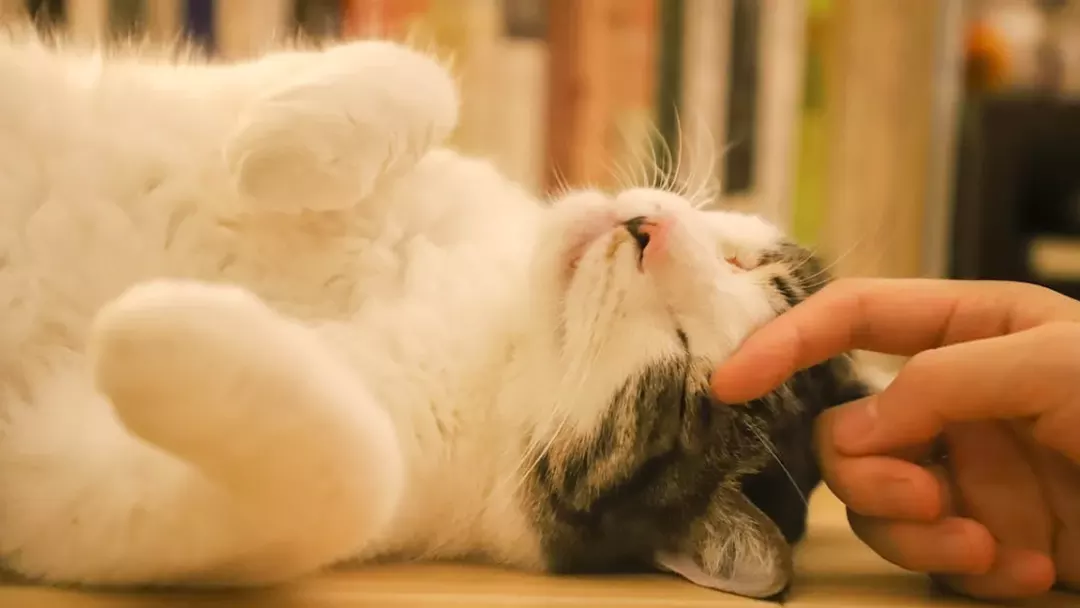At its core, training your cat means teaching it to connect good behavior with a reward. By doing this, you can get them to stop doing bad things and start doing good things, which will make you both happier and healthier.
Even though cats don’t naturally want to work with people, they can learn to do tricks and follow commands just like dogs. Cat training can also give cats mental and physical stimulation that is good for them, which can help them act less anxious, aggressive, or destructive.
Consistently worrying on how to train your cat can also help you read their body language and figure out what they are trying to say including all the ways they show they love you! If you’re not sure if you’re ready to get a cat because you’re worried about how to train cats and their bad behavior, think about how well cats can be trained down below.
Things You Should Be Aware of Before You Proceed

Use positive reinforcement
Pay more attention to the actions you want your cat to repeat than to the ones you want them to cease. Your cat will likely avoid you if you yell at it, smack it, or use a spray on it for misbehavior.
Be patient
It takes time to learn new habits or to resolve behavior issues. Keep in mind that your cat is capable of much more than you would think, and is also very clever.
Get some sweets in stock.
To begin, felines need encouragement. Unless the incentives are substantial, cats won’t be as motivated to learn as dogs. Make sure you have enough of tasty treats and high-quality cat food on hand for your training sessions.
Sessions should be kept to a minimum.
Cats are notorious for their lack of focus. A training session of no more than 15 minutes is ideal, since it’s long enough to get the job done but short enough to keep your cat interested. Keep in mind that attaining perfection is not the objective.
Put an end to interruptions.
A cat that is easily sidetracked will not be productive. Locate a secluded area apart from household noise and distractions to conduct your training. Your training session will be ineffective if your cat is distracted by any outside sounds.
Discover the optimal time
Training sessions should be included into a cat’s daily schedule, which consists of hunting (playing), feeding, grooming, and sleeping. If you want your cat to pay attention to training, try doing it shortly after it wakes up from a sleep, when it is eager to play. And since they’ll likely be hungry, they’ll work harder than usual to get those yummy rewards.
Simply keep repeating the process
Your cat will become more obedient the more you repeat the same steps. Once your cat learns the skill, make sure you practice it regularly outside of a training session so your cat doesn’t forget it.
Maintain uniformity in your cue use.
Use consistent indications (may be hand signals) or hints to convey the intended command. Family members may assist keep things consistent if they are aware of the appropriate signs and cues as well.
Learn and perfect one ability before moving on to the next.
It is best not to try to teach a cat too many new things at once. You should go on to the following step only once your cat has mastered the previous one.
Common Cat Training Methods

Cat teaching techniques include clickers, hand gestures, verbal cues, and a mix of all three.
Dialogue
Voice cues suggest orders. Like hand signals, correlate a word with behavior and reward your cat. Saying “sit” to sit or “name” to go to you.
Gestures
Another wonderful cat training method is hand signals. Associating orders with hand movements is crucial. Making a fist to get your cat to sit or an open palm to get a high five might help reinforce habits.
Clicker training
Clicker training cats works well. A training clicker, pen, or tongue will do! The idea is to identify the clicking sound with a reward and eventually a new skill or desirable behavior, generating a cycle of reinforcement.
How to Train Your Cat to Behave Well

Here are some skills you can teach your cat, like how to give you a high five or how to easily get into their carrier.
High fives
A high five is a fun thing to do when you’re at a party. Put a treat in front of your cat and have it sit there. Give your cat a treat if its paw comes off the ground.
When your cat starts to reach for your hand, slowly move it up. Your cat will soon try to get the treat higher and higher. When your cat can finally give you a high five, stop giving it treats and instead praise it and scratch its chin.
Sitting
It can be helpful to teach your cat to sit. Just stand or sit in front of your cat. When it sits on its own, give it a treat. When they sit down to wait for the treat, you can tell them to “sit.” Soon, they’ll connect the cue to the action.
Littering lessons
Many kittens and cats already know how to use the litter box when they are born. But even if yours didn’t, you can teach them to use the litter box pretty quickly.
Make sure the box is clean and in a quiet spot. Move your cat to the litter box after it eats and let one of its front paws lightly scratch the litter. After they urinate or defecate, give them a treat and take them out of the box. If you do this every time, they will soon learn that the litter box is where they should go to the bathroom.
Training for carriers
Cats can be taught that the carrier is a safe place to be through carrier training. This makes it easier to travel with your cat.
First, open the door of the carrier and put a favorite toy or treat inside. When your cat goes into the crate, do something nice for it, like pet it or scratch its chin. Close the door once your cat is comfortable. Start with a few seconds and slowly add more time as your cat gets used to the door being shut.
Once your cat is used to the door being shut, get them used to being carried in the crate. Start by picking it up and putting it back down, then take small steps forward. If you do this often enough, your cat will soon be fine when it’s time to go somewhere or see the vet.
How to Stop Bad Behavior

Are you tired of your cat destroying your furniture how to train cats to stop trying to scratch you? Here are some ways to stop doing things that are wrong.
Stay away from the countertops
Cats love to jump up on countertops, which can be both unsettling and dangerous. You can teach a cat not to jump up on the counter by putting something on it that it doesn’t like or by using double-sided tape. Both of these things will make the cat less likely to jump up there.
If they jump up on the counter, you should gently put them back on the ground. If they know how to sit, this is a great time to use it. Give your cat a treat after it sits down and shows it won’t jump up on the counter again.
He would attack with his teeth or with his back legs
It’s normal for cats to bite or kick, but if they keep doing these things, they could become a problem. Respect your cat’s territory if it bites or kicks you because you crossed a line or got into its private space. But if your cat bites or kicks during physical play, you should stop interacting with it and ignore it. When your cat stops being aggressive, give it a treat for being calm.
You can also stop your cat from biting you by moving away from the situation and letting the cat lick your hand instead. To do this, put a treat or cat food on the palm of your hand or the tips of your fingers. If you let your cat lick the treat of your hand, it will learn how to play with your hand in a better way when it wants to.
Causing harm to the furniture
The easiest way to keep cats from scratching up furniture is to give them a scratching post. If this doesn’t fix the problem, you could try covering the area with double-sided tape to stop your cat from using it. Remember that cats use scratching posts to mark their territory, and when they do, they leave their pheromones behind. A cat is more likely to use a scratching post if it is out in the open or if it is in a room that other people also use.
Chewing in a way that hurts
Having a pet that chews up things is not only annoying, but it also poses a risk of serious injury. This is especially important to keep in mind if your cat likes to chew on electrical cords.
Hide things or spray them with a spray made of bitter apples to keep animals from chewing on them and doing damage. You could also give them other cat toys, like catnip balls or chew sticks, to keep them busy.
Getting food from indoor plants
There are a few common houseplants that cats should not be around. Even though you should never bring these plants inside your house, the next best thing is to keep them in one area and wrap the trunk with double-sided tape, a screen, or aluminum foil.
This will stop the roots of the plant from spreading. You could also put strips of aluminum foil in the container to keep your cat from getting in. When your cat wants to chew on some leafy greens, you can also give them cat grass.
Trying to find something to eat
Some cats may yowl and meow nonstop when it’s almost time for them to eat in an effort to get your attention. Ignoring the behavior is the best way to stop a cat from meowing all the time. Your cat will quickly figure out that this behavior doesn’t lead to anything good and stop doing it.
You could have them sit down while you make their food to show them that the only way to get what they want is to act properly.
Training cats is a great way to reach many different goals, don’t know how to train a cat is just as easy as making your cat feel safer in its environment, stopping it from doing things you don’t like, or teaching it some cool party tricks to show off to your friends.
Giving your cat a few minutes of your time every day will not only keep it mentally and physically busy but also help you and your purring feline friend become closer.




